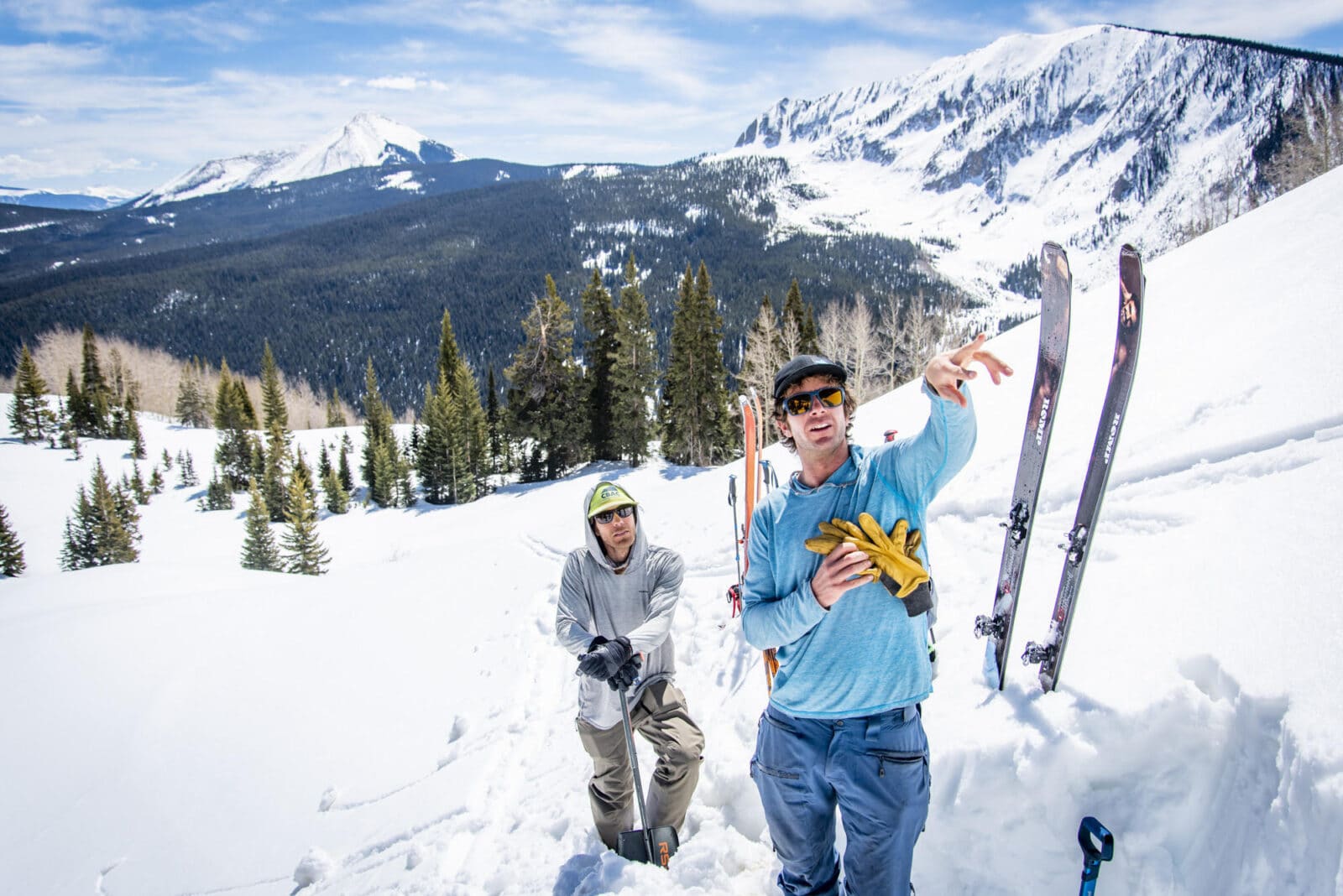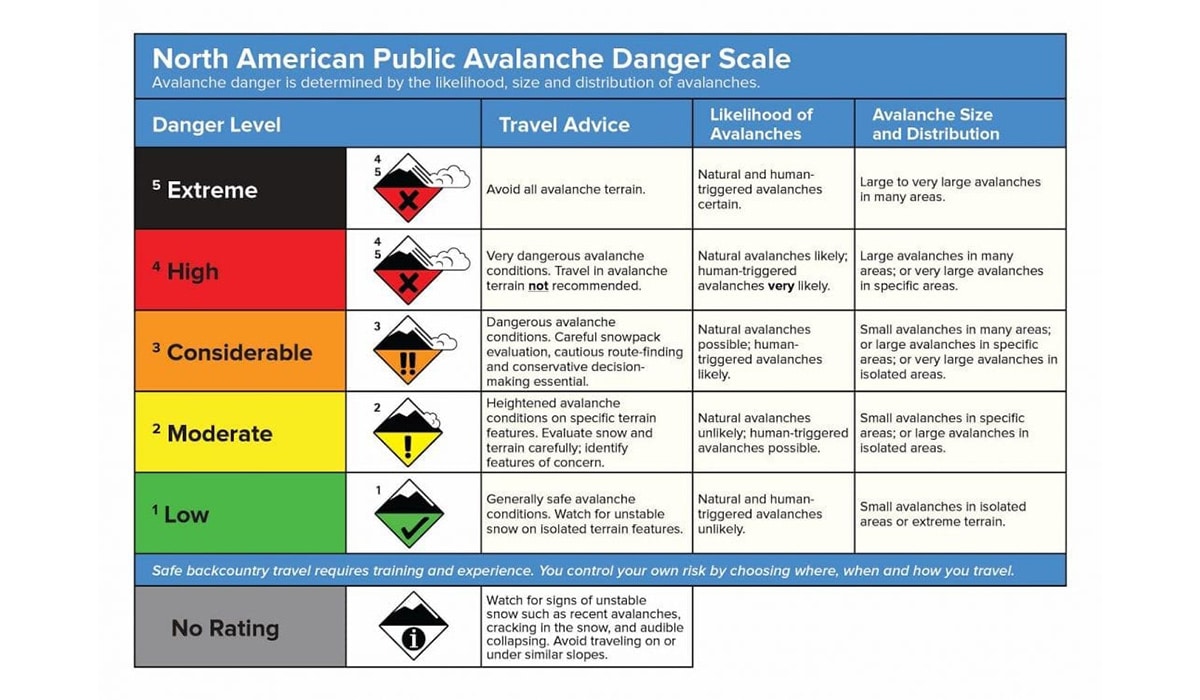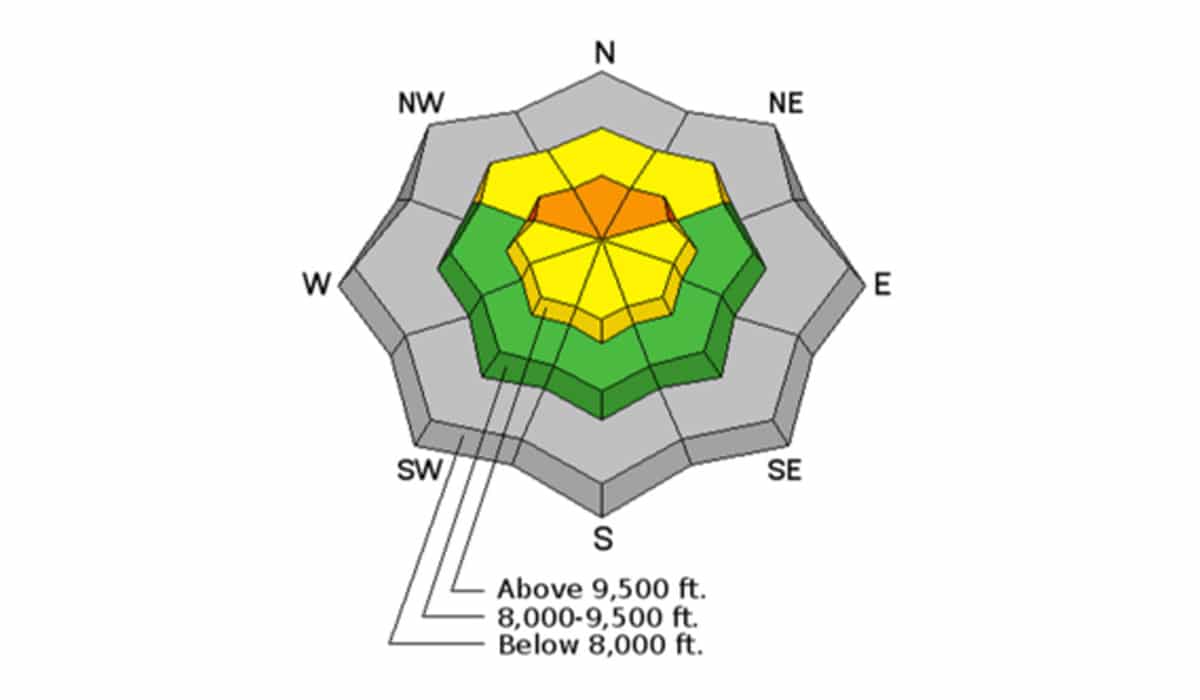How To Read An Avalanche Forecast
Shut off the alarm, grab your coffee, and open onX Backcountry—it’s time to check the avalanche forecast. The first part of every backcountry skier’s day in the mountains needs to be spent with an avalanche report.
Avalanche Forecasts
From Zach Guy and the Crested Butte Avalanche Center, this video showcases the intricacies of reading an avalanche forecast.

What is an Avalanche Forecast?
No matter who you are or what your preferred method of travel in the backcountry, every person traveling in avalanche terrain needs to be equipped with the knowledge that avalanche forecasts provide. Your local avalanche center provides regular updates on their website. There’s a lot of information within the forecast, let’s break down its components.
Avalanche Danger Ratings
The five tiers avalanche centers have agreed upon to measure severity are:
- Extreme: Do not travel in avalanche terrain.
- High: Severe avalanche risk is present. Travel in avalanche terrain is inadvisable.
- Considerable: Dangerous avalanche conditions exist. Careful route-finding and cautious snowpack evaluation are required.
- Moderate: Heightened avalanche risk on certain terrain. Evaluate snow and terrain carefully.
- Low: Generally safe.

Avalanche Danger Rose

Imagine a three-dimensional mountain from a bird’s eye view, that’s the essence of what you’re looking at with a “danger rose.” It’s broken into three parts: upper elevation, mid elevation, and low elevation. Each will be given its own rating. Further, the rose is broken into eight cardinal directions, called aspects. These aspects denote which slope of the mountain is dangerous. Check out this video for a more detailed look.
Types of Avalanche Problems
The nine types of avalanche problems as classified in the U.S. are:
- Dry Loose: The release of unconsolidated snow sometimes known as sluff or point-release. The biggest concern is being caught in one and carried into a terrain trap.
- Wet Loose: A denser, more moisture-rich version of the dry loose version above.
- Storm Slab: The failure of a cohesive section of snow that developed during a storm. When it forms over old snow, including a weak-layer like facets or depth hoars, the entire slope can release. Best to let the snow settle for a few days before skiing.
- Wind Slab: A cohesive slab of snow developed by wind-loading. Wind can transport more snow than an entire storm and place it in a location susceptible to release.
- Persistent Slab: This is when the bond from a newer snowpack breaks from its older snowpack. Persistent layers include: surface hoar, depth hoar, near-surface facets, or faceted snow.
- Deep Persistent Slab: A thicker version of the aforementioned Persistent Slab.
- Wet Slab: Release of a cohesive layer of snow that is moist or wet. Flowing water weakens the bond between the layers catalyzing a slide.
- Glide: A release of the entire snowpack over the ground.
- Cornice Fall: The release of a snowmass overhanging steep terrain. Staying out of their path is critical as they can slide with or without a human trigger. And when traversing along a ridge, be extra cautious of these snow features.
Likelihood and Size
According to Crested Butte Avalanche Center Lead Avalanche Forecaster Zach Guy, “The ‘likelihood slider’ highlights the chance of an avalanche releasing within the specified distribution and time period. Likelihood is defined by the sensitivity to triggers and how commonly the problem is found throughout the terrain.” Likelihood is also broken down on a slider ranging from unlikely to almost certain. He goes on to say, “For our purposes ‘unlikely’ means that few avalanches can be triggered in avalanche terrain and natural avalanches are not expected. ‘Almost certain’ means that human and natural avalanche activity will be widespread.”
Size is broken down into a sliding scale ranging from D1-D5.
- Small
- Large
- Very Large
- Historic
- Historic and capable of destroying a landscape.
“The destructive size is influenced by terrain features: longer, steeper paths are capable of producing larger avalanches under the same avalanche characteristics found on smaller slopes,” says Guy.
Read the Observations and Visual Cues
Most avalanche centers’ forecast will include discussion that houses observations, evidence, and recent avalanches. By reviewing this section on a daily basis, you’ll be able to piece together a comprehensive image of the landscape. By combining their “bottomline” section, the elements mentioned above, current weather patterns, and the tools available to you in onX Backcountry, you’ll have the ability to make informed decisions in the backcountry. Ultimately, your safety is up to you and the decisions that you make.